Do Catfish Have Backbones? Yes, they do! In fact, this is one of the features that sets catfish apart from other types of fish. But what exactly is a backbone, and how does it affect the behavior and movement of catfish?
In this article, we’ll explore everything you need to know about catfish anatomy, including the structure of their backbones and the benefits it provides. So if you’re curious about catfish and want to learn more, read on!
Catfish Anatomy
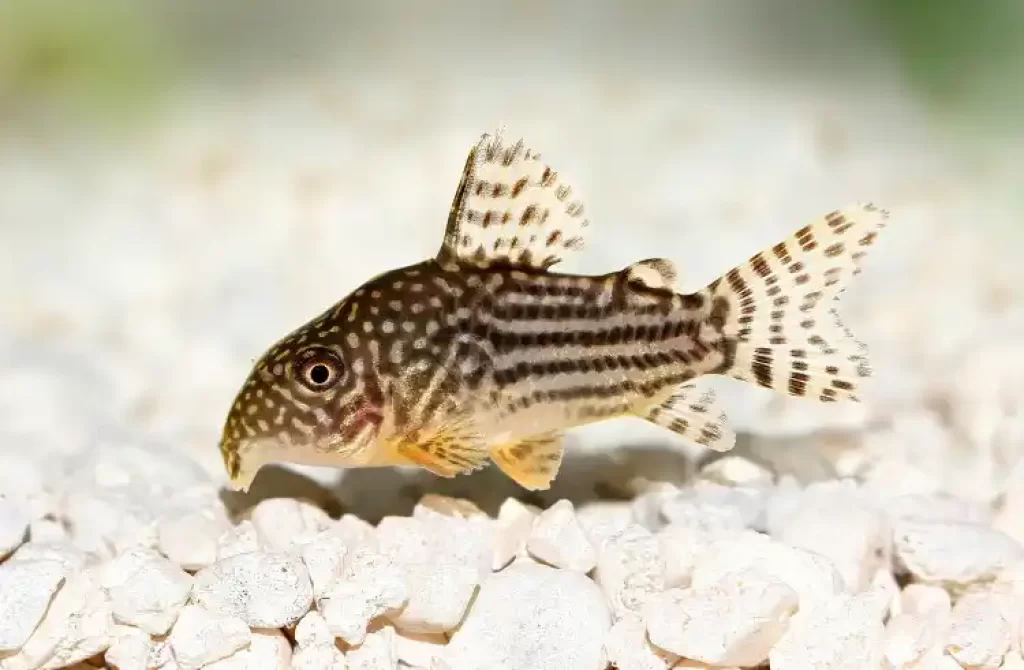
Catfish are a type of fish that are known for their unique anatomy. Unlike most other fish, catfish have a series of spines on their dorsal and pectoral fins. These spines, known as rays, provide support and structure for the fins, allowing the catfish to maneuver through the water.
In addition to their spines, catfish also have a unique skeletal structure. They have a series of bony plates along their body, known as scutes, which help to protect them from predators. These scutes are also used to identify different species of catfish, as they are arranged in distinct patterns.
Another notable feature of catfish anatomy is their lack of scales. Instead of scales, catfish have a smooth, slimy skin that helps to protect them from parasites and other external threats. This slimy skin also helps them to move more efficiently through the water.
Catfish are also known for their barbels, which are whisker-like sensory organs located near their mouth. These barbels are used to detect food and other objects in the water, as well as to navigate their surroundings.
Some basic information about different types of catfish:
| Type of Catfish | Average Size | Habitat | Diet | Lifespan |
|---|---|---|---|---|
| Channel Catfish | 12-24 inches | Freshwater rivers and streams | Carnivorous, eats insects, crustaceans, and small fish | 15-20 years |
| Blue Catfish | 20-40 inches | Large rivers and reservoirs | Carnivorous, eats mainly fish | 20-30 years |
| Flathead Catfish | 15-25 inches | Rivers and lakes with slow-moving water | Carnivorous, eats mainly live fish | 12-24 years |
| White Catfish | 12-18 inches | Ponds, lakes, and slow-moving streams | Omnivorous, eats insects, crustaceans, and small fish | 10-12 years |
Do Catfish Have Backbones?
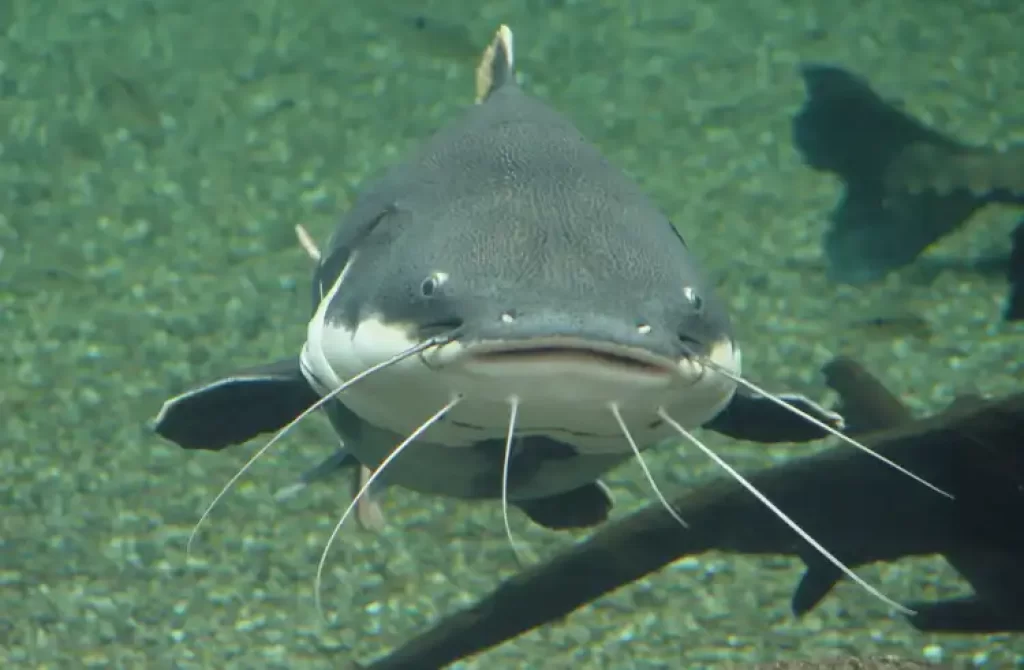
The answer is yes, catfish have backbones, also known as vertebral columns, just like other fish and most animals. Their backbone is composed of a series of individual vertebrae, which are connected by joints and separated by intervertebral discs.
These discs provide cushioning and flexibility to the spine, allowing catfish to bend and twist their bodies in various ways.
However, catfish have a unique type of backbone called a notochord, which is present during their early development and later replaced by vertebrae. The notochord is a flexible rod-like structure that runs along the length of the body and provides support and rigidity.
In some species of catfish, such as the armored catfish, the notochord remains partially or completely throughout their life.
The presence of a notochord and flexible spine allows catfish to move in ways that other fish cannot. They are able to bend and twist their bodies, which helps them navigate through narrow crevices and rocky areas in their natural habitats. They also use their flexible spines to escape predators and catch prey.
Fun fact: Some species of catfish can survive out of water for short periods of time by breathing air through their skin.
Benefits of Having a Backbone for catfish
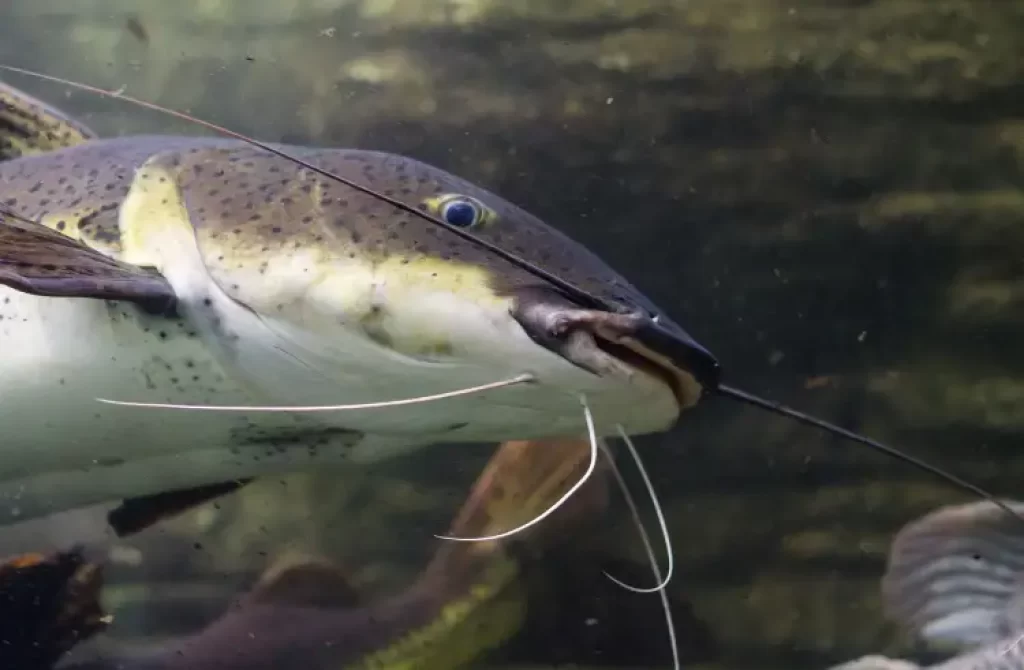
Efficient Swimming and Hunting Abilities
The backbone of a catfish allows for efficient swimming and hunting abilities. The backbone is made up of individual vertebrae that are connected by muscles, ligaments, and tendons.
These connections give catfish the ability to flex and move their spine, which helps them to swim more efficiently through the water.
This flexibility also enables them to bend and twist their bodies, making it easier to hunt prey such as insects, crustaceans, and small fish.
Other Advantages Provided by the Backbone
In addition to swimming and hunting abilities, the backbone provides catfish with other advantages as well. The backbone serves as an anchor for their muscles, allowing for more power and control during movements.
It also protects the spinal cord, which is essential for transmitting messages from the brain to the rest of the body. The backbone also plays a role in the catfish’s ability to maintain its posture, both in the water and on land.
Related: Can saltwater catfish be eaten? Are they poisonous? Check out our article for answers.
4 Facts about catfish
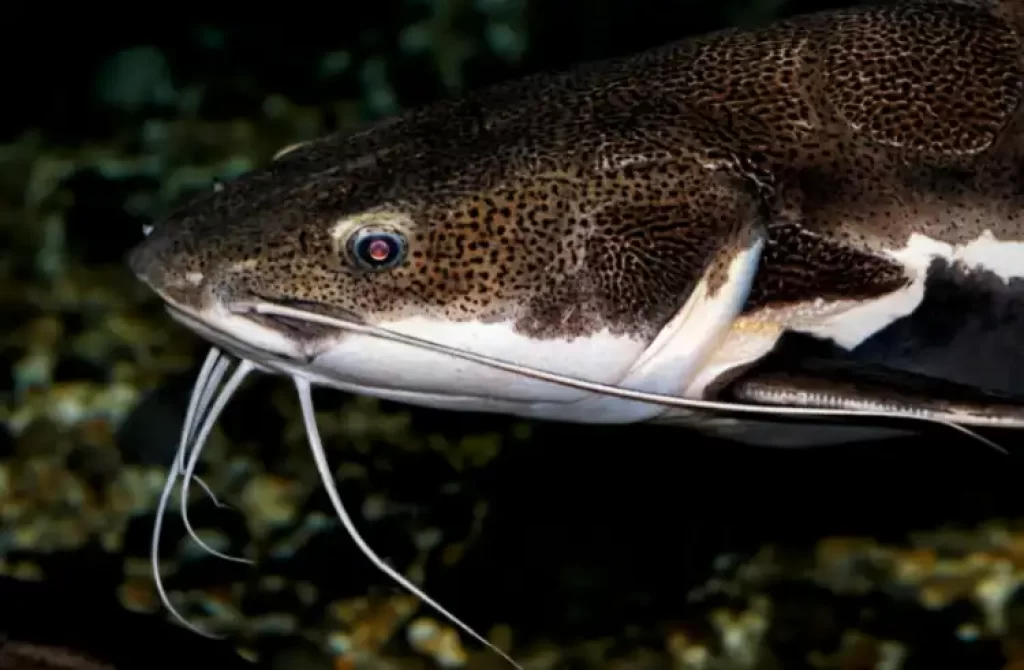
- Catfish are bottom-dwelling fish that are found in freshwater and saltwater environments around the world.
- They are known for their barbels, which are whisker-like sensory organs that help them locate food in murky waters.
- Catfish can vary in size from small species, such as the banjo catfish, which can grow to only a few centimeters in length, to large species, such as the Mekong giant catfish, which can grow up to 10 feet in length and weigh over 600 pounds.
- Some catfish species are able to breathe air through a modified swim bladder, which allows them to survive in oxygen-depleted or shallow waters.
You might also like: What Do Catfish Eat? Find Out Everything You Need to Know in This Article
How often do catfish reproduce?
The frequency of catfish reproduction depends on the species, but generally, catfish reproduce once a year during the breeding season. Some species may breed more frequently, while others may only breed every few years.
The breeding season for catfish is usually in the spring or early summer, when water temperatures rise and conditions are optimal for egg hatching and fry survival.
Do catfishes have jaws?
Yes, catfish have jaws. They have a bony structure that supports their mouth and allows them to open and close it to catch and consume prey.
Wrapping things up…
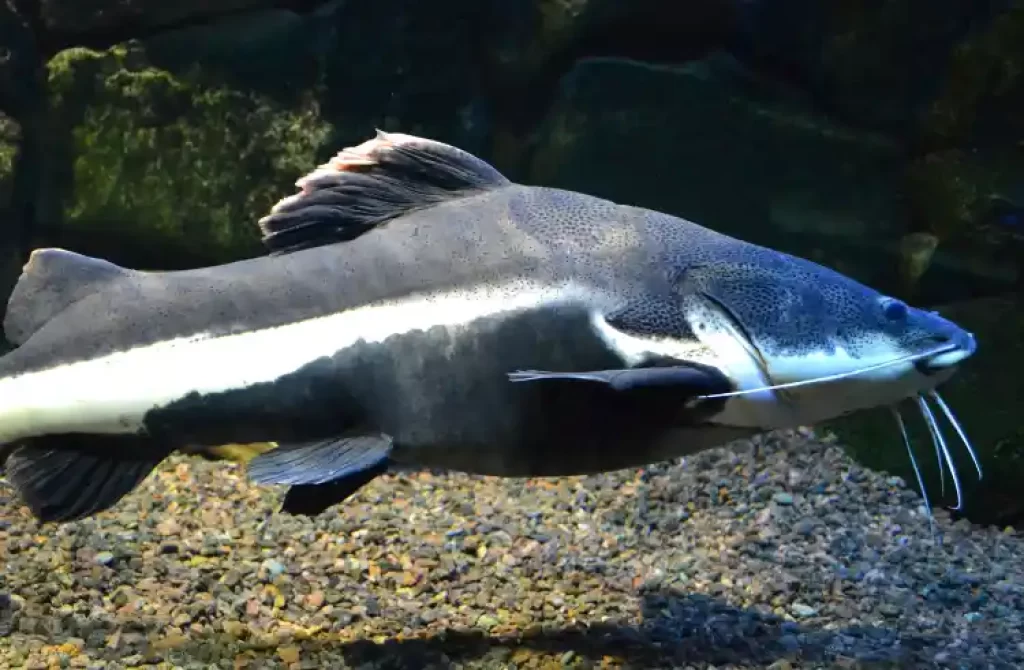
Catfish are fascinating creatures with unique anatomy and behavior. Despite being a type of fish, they do have a backbone, which provides several advantages for their movement and hunting abilities. Understanding the anatomy of catfish is important for fish enthusiasts and those interested in aquatic life.
If you want to learn more about catfish anatomy and behavior, there are several resources available, including books, online articles, and expert forums. We hope this post has been informative and helps you appreciate the incredible world of catfish.
Adicional resources
Here are some additional resources for those who want to learn more about catfish:
- “Carp and Catfish: Biology, Behavior and Conservation Strategies (Fish, Fishing and Fisheries)” – This book provides an in-depth look at the biology and behavior of catfish, as well as their conservation.
- “The Catfish Book: All About Catfish” by In-Fisherman Staff“ – This comprehensive guide covers everything from the different species of catfish to their habitat and feeding habits.
- “How To Catch Catfish – Survival Tips For The Best Catfish Baits, Lures, And Methods” – This book is a great resource for those interested in fishing for catfish, with tips and techniques for catching these fish for both fun and food.
- “Monster Fish: In Search of the Last River Giants” by Jeremy Wade – While not specifically about catfish, this documentary series by the host of the Animal Planet show “River Monsters” includes fascinating stories and information about large freshwater fish, including catfish.
- “How do Catfish See the World?” – it’s a video from BBC earth with detailed inflammation about the topic
These resources offer a variety of perspectives on catfish, from their biology and behavior to fishing and even entertainment.
Frequently asked questions (FAQ) about catfish
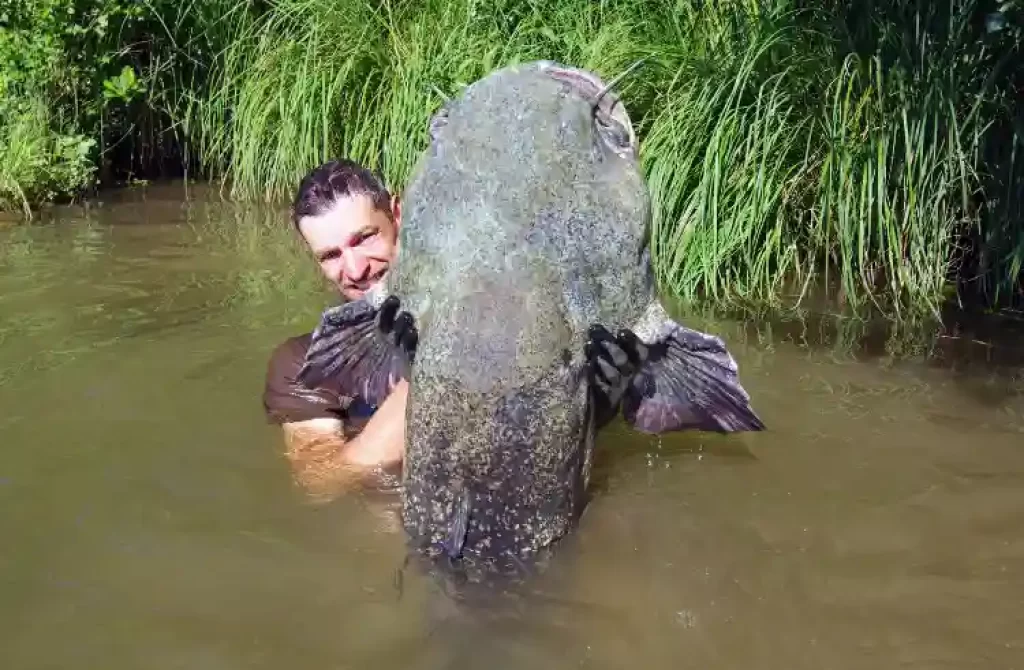
Q: Do all catfish have barbels?
Yes, all catfish have barbels. These are sensory organs that help the fish detect food in the murky waters where they typically live.
Are all catfish bottom feeders? Most species of catfish are bottom feeders, but not all of them. Some species are known to swim near the surface or in the middle of the water column.
Q: How big can catfish get?
A: Catfish can vary in size depending on the species. Some species, like the pygmy catfish, are only a few centimeters long, while others, like the Mekong giant catfish, can grow up to 10 feet long and weigh over 600 pounds.
Q: Are catfish edible?
A: Yes, catfish are a popular food source in many parts of the world. They are often farmed for their meat and can be cooked in a variety of ways, including frying, grilling, and baking.
Q: Are catfish dangerous to humans?
A: Most species of catfish are not dangerous to humans. However, some species have sharp spines that can cause injury if not handled properly. Additionally, some catfish species can deliver an electric shock.
Q: Do catfish make good pets?
A: Some species of catfish, such as the channel catfish, can be kept as pets in aquariums. However, they require specific water conditions and can grow quite large, so they may not be suitable for all hobbyists.
Q: How do catfish reproduce?
A: Catfish reproduce by laying eggs, which are then fertilized by the male. Some species build nests for their eggs, while others simply lay them on the bottom of their habitat.
Q: Are catfish solitary or social animals?
A: Catfish are generally solitary animals, but some species do form groups or schools. They may also gather in certain areas during spawning season.
Q: How long do catfish live?
A: The lifespan of catfish varies depending on the species. Some species only live for a few years, while others can live for several decades.
Q: What is the biggest catfish ever caught?
A: The biggest catfish ever caught was a Mekong giant catfish caught in Thailand in 2005. It was over 9 feet long and weighed 646 pounds.

How Long do Monkeys Live?






